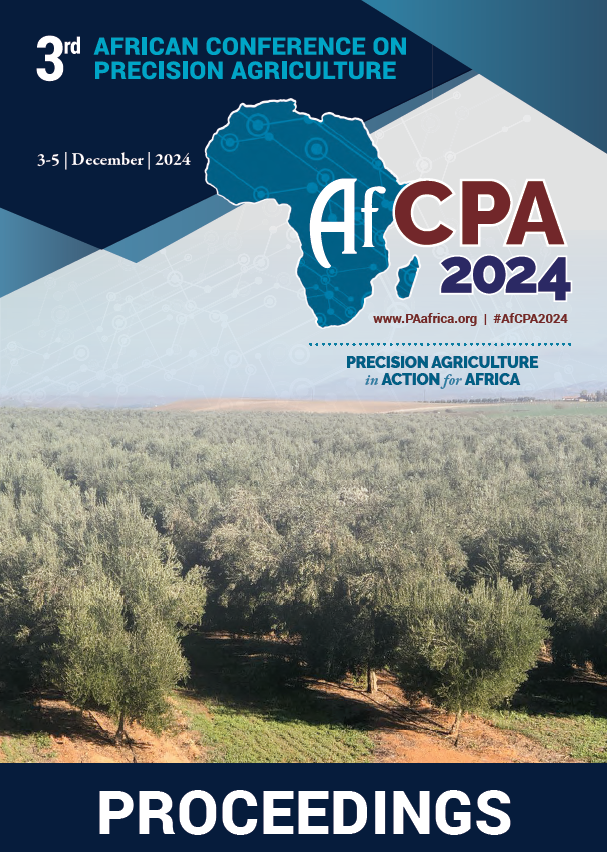Download the Conference Proceedings
Proceedings
Authors
| Filter results7 paper(s) found. |
|---|
1. Biochar and/or Compost for Soil Quality and Maize Yield Improvement in an Acidic Ferralsol Soil in Kenya.The rapidly increasing global population, climate change and dwindling resources have made it very difficult to meet global food demand. To address the issue of food insecurity, sustainable intensification of agriculture (SIA) has been proposed. However, the consequences of poorly managed agricultural intensification can negatively affect the ecosystem. Biochar and compost application has been widely recommended as a highly promising soil fertility replenishment option to promote sustainable agriculture.... |
2. Decision Support System for Precision Agriculture management Case study : El Salihiya –east Nile delta, Egypt.Soil is a complex mixture of living organisms and organic material, along with soil minerals. the main objective of this work is develop a new methods to improve the agricultural management .The current study relies on developing a decision-making model for agricultural operations to manage potato crops in the El Salihiya area using field data,laboratory analysis and field sensor measurements. The precision agriculture decision support system entitled (EGYPADS) was designed and developed... A. Belal , S. abd el-kader, B. Mamdouh , M. A el-shirbeny, M. abdellatif1, M. Jalhoum , M. Zahran, E.S. Mohamed |
3. Monitoring Corn (Zea mays) Yield using Sentinel-2 and Machine Learning for Precision Agriculture ApplicationsCurrently, there is a growing demand to apply precision agriculture (PA) management practices at agricultural fields expecting more efficient and more profitable management. One of PA principal components for site-specific management is crop yield monitoring which varies temporally between seasons and spatially within-field. In this study, we investigated the possibility of monitoring within-field variability of corn grain yield in a 22ha field located in Ferarra, North Italy. Archived yield data... A. Kayad, M. Sozzi, F. Pirotti, F. Marinello, L. Sartori, S. Gatto |
4. Comparative Assesement of Interpolation Techniques in Predicting Soil Properties on a Sloping Pasture Land Under Fallow in a Ferralsol in UgandaSoil variability is a major challenge in application of mineral fertilizers in Sub-Saharan Africa (SSA). Use of soil fertility maps can effectively guide the use of mineral or organic fertilizers or fertilizers. Interpolation techniques are widely used in the formulation of these fertility maps. The precision of spatial interpolation techniques for predicting unmeasured values have been reported by various researchers but there are cconflicting findings regarding the relative performance of these... J.M. Menya, P. Musinguzi, J.M. Mwanjalolo |
5. Use of Earth Observation Imagery, Advanced Modelling Algorithms and Other Monitoring Systems to Produce Operational Agricultural Annual Crop Inventories for Morocco.African farmers are facing the challenges of a changing climate, increased temperatures, changes in rainfall patterns, more frequent extreme weather events and reductions in water availability. The digital transformation of the agricultural sector is one of the opportunities that can promote good practices of the African agricultural through the sharing of information and tools for decision-making, thereby, boost economic growth of our African country. The shift to digital technologies is... M. Choukri, A. Laamrani , V. simonneaux , B. Gerard , S. Belaqziz, A. Chehbouni, K. Misbah, H. Mcnairn |
6. Effects of Legume Break Crops on Yield, Nitrogen Use Efficiency and Economy of Maize Production in Western Oromia, Ethiopia: a ReviewProlonged monocropping of maize lacking appropriate soil fertility management is affecting soil fertility and maize production in Western Oromia. The use of legume break crops improved performance of subsequent maize. The biological N2-fixation of legumes as precursor crops reduced the amount of nitrogen fertilizer applied to maize. Higher mean grain yield of maize was obtained following faba bean without and with rhizobia inoculation than maize after maize. The total nitrogen uptake of different... T.A. Goshu, T.A. Goshu, T.A. Goshu |
7. The Global Crop Nutrient Removal Database (Gcnrd): Development, Initial Analysis and Identification of Current Data GapsImproved understanding of the factors affecting nutrient uptake can enable production optimization, increased nutrient use efficiencies, reduced environmental footprints, and overall higher economic returns for farmers. Crop uptake is affected by genetics, soil, weather, agronomic practices, and their interactions. As such, understanding the way crop nutrient uptake varies across different regions and production environments requires the coverage of various parameters, and necessitates collaboration... C. Ludemann, A. Dobermann, N. Graff, S. Sela, M. Van loon, R. Hijbeek, M. Van ittersum |
